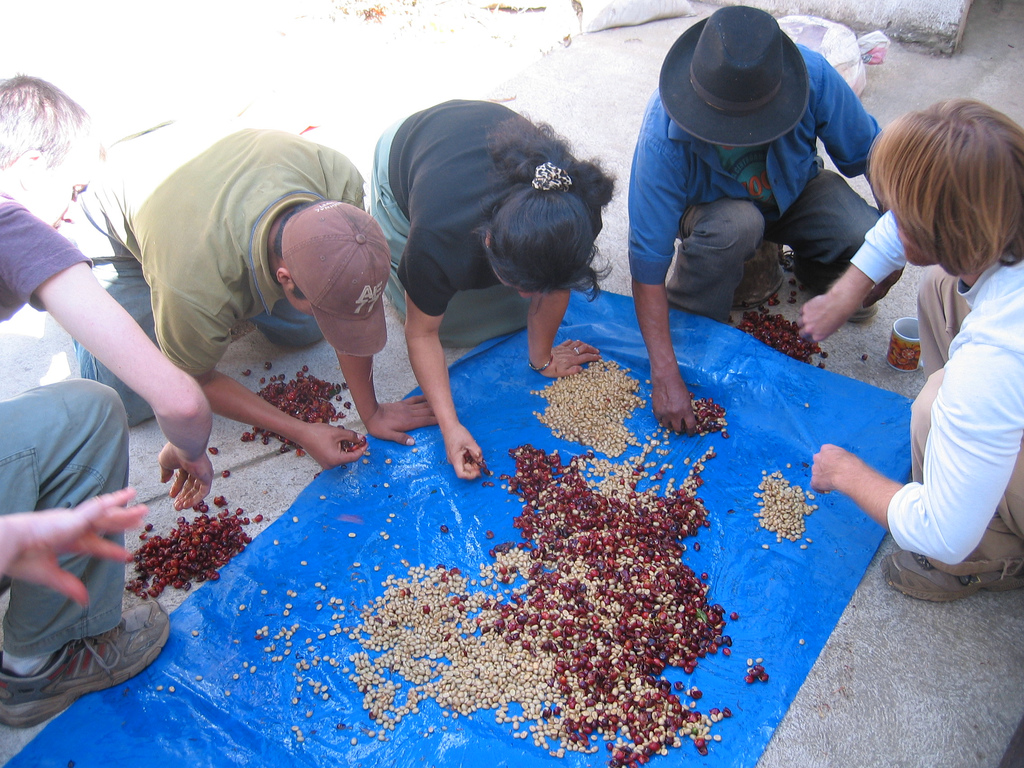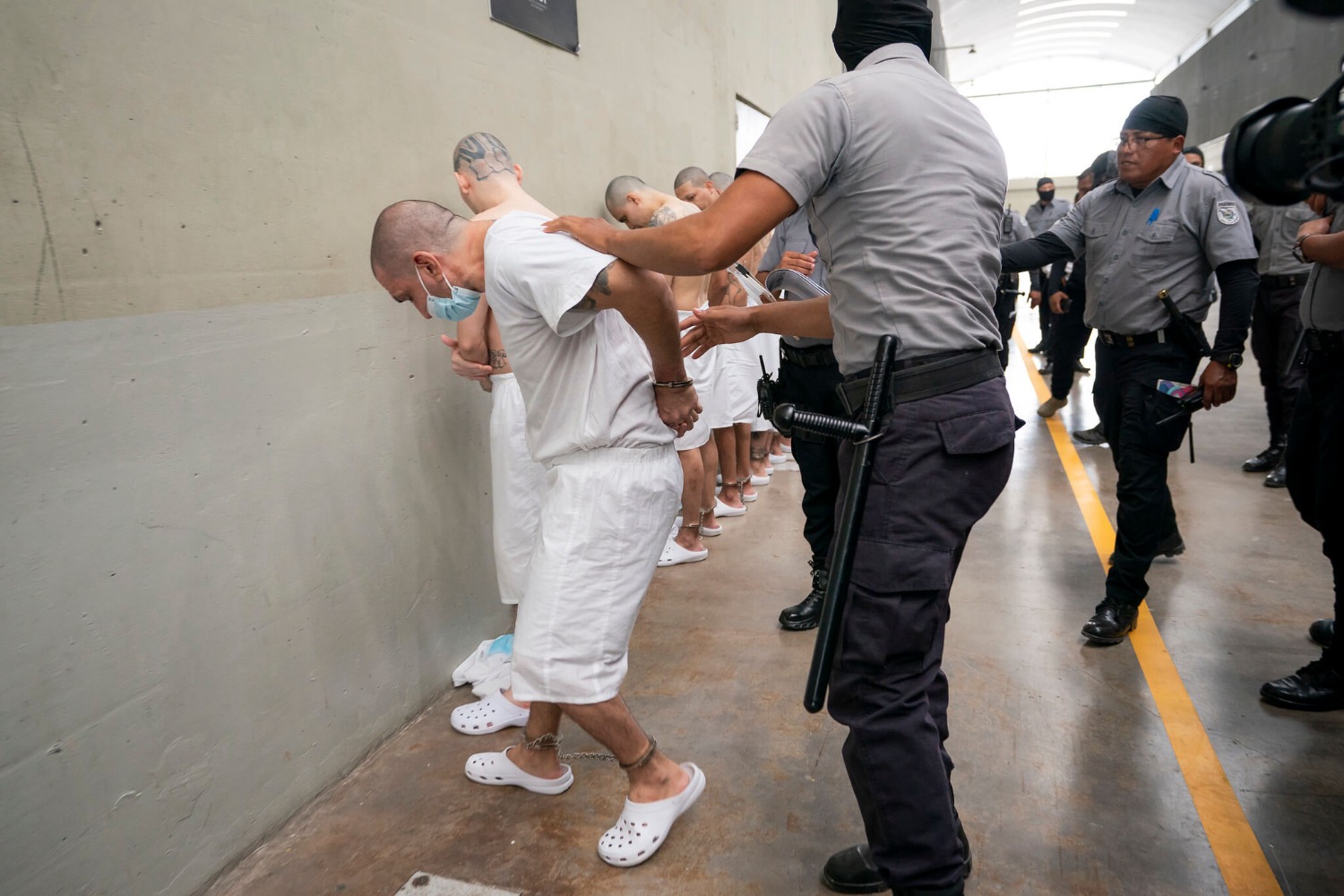How a Struggling Coffee Market Pushes Guatemalans North
Last year, I traveled to the Guatemalan highlands to visit the towns that were sending the most people per capita to the United States. I was curious about why Guatemalans were leaving their communities and what factors contributed to these decisions. In each town, I never found a single answer but, rather, various overlapping reasons that included a changing climate, low wages, few opportunities for employment, a desire for family reunification, distrust in political leaders and a lack of safety, among others.

Published by The Lawfare Institute
in Cooperation With

Last year, I traveled to the Guatemalan highlands to visit the towns that were sending the most people per capita to the United States. I was curious about why Guatemalans were leaving their communities and what factors contributed to these decisions. In each town, I never found a single answer but, rather, various overlapping reasons that included a changing climate, low wages, few opportunities for employment, a desire for family reunification, distrust in political leaders and a lack of safety, among others. Yet there was one unexpected theme that I kept hearing about in the highlands: a changing coffee sector and low international coffee prices.
Guatemala’s coffee industry is one of the country’s main economic motors and also the largest rural employer. Yet, in recent years, the industry has struggled to stay afloat amid recurring coffee plagues, unpredictable rain patterns, a stronger Quetzal (the Guatemalan currency) and low global coffee prices. When prices are high, coffee growers can flourish and absorb higher production costs, but when prices drop, hundreds of thousands of families watch as their incomes dry up. These families and their communities often have few alternative economic opportunities, meaning that a struggling coffee sector can send local economies into a tailspin.
Over the past three years, the combination of Guatemala’s various push factors have sparked an exodus, with emigration numbers more than tripling (doubling over the past year alone). Since October 2018, the country has surged past Mexico as the number-one sending country for people arriving at the U.S.-Mexico border. During this time frame, the U.S. Border Patrol apprehended more than 250,000 Guatemalans—compared to just 136,000 Mexicans—making up a third of all U.S. border arrivals and 40 percent of all apprehended families. It’s also likely that tens of thousands more Guatemalans have left the country, with Sarah Spalding and I estimating, in a model we made for Lawfare, that more than 282,600 Guatemalans have headed north since last October.
Given the high emigration numbers, I wanted to better understand the role that coffee production plays in migration decisions. To do so, I spoke with Alejandro Augusto Molina Leanza, a coffee market specialist at Guatemala’s National Coffee Association (ANACAFE). (He has since moved on to another position in the coffee industry.) Alejandro, a coffee farmer himself, explained the coffee industry’s importance for Guatemala, the current market fluctuations and how these changes are affecting outward migration. He painted a bleak picture of the industry’s conditions and makes the case for why we should all be taking a harder look at the coffee sector if we care about development or migration in Central America. Our conversation is transcribed below and edited for brevity and clarity.
***
Leutert: Thanks so much for taking the time to talk to us! Could you start off by putting Guatemala’s coffee sector into context? It’s clear that coffee is a big part of the country’s economy, but just how important is it?
Alejandro Augusto Molina Leanza: Thanks for the opportunity to chat on behalf of the National Coffee Association and the farmers here in Guatemala. Guatemala’s coffee sector represents more than 125,000 coffee producers, and most of these coffee producers—97 percent—are classified as small-holder farmers. Overall, coffee creates more than 500,000 jobs a year [note: Guatemala has a total population of 17 million people] and is the agricultural sector with the highest employment numbers in the country. In terms of agricultural exports, coffee toggles back and forth with sugar for the number-one and number-two spots. Our last coffee harvest (2017-2018) generated 3.3 million bags of coffee (in 60 kg measurement) for a total of $738 million.
Yet, despite the sector’s importance to Guatemala’s economy, it is going through a lot of challenges right now. Can you give me a snapshot of what is going on?
The number-one issue that the coffee industry faces is our economic sustainability. We talk a lot about environmental and social sustainability, but without being first economically sustainable we cannot address these other two pillars. The international coffee price is low right now and has recently been going back and forth around $1 a pound, after a record harvest in Brazil.
This is not sustainable nor does it provide for a dignified living wage for coffee-growing families. Back in 1976, the price of coffee was 93 cents a pound. How is it possible that we have the same price after 40 years? The international coffee price has never even been adjusted for inflation. For example, in 1976, a Toyota Landcruiser cost $5,500, which was the equivalent of 55 bags of green coffee. In 2017, a new Toyota Landcruiser cost $42,000, which is equivalent to 1,500 bags of green coffee. So the farmers are receiving less money (in real terms) and having to pay more for everything (their inputs).
The other major contributing factor is the income inequality in the sector. To give you context, the global coffee industry is valued at $200 billion. However, coffee-exporting countries receive less than 10 percent of that $200 billion. We are all receiving $20 billion, and the other $180 billion remains in the consuming countries. There is a lot that goes into that, such as building brands etc., and we are very aware of the reality of a value chain. But less than 10 percent of the total value feels like exploitation.
Here is another statistic that shows something similar. According to the United States’s National Coffee Association, coffee generates $28 billion in tax revenues for the federal government and local governments. This is more than what all coffee-producing countries in the world make through their coffee exports combined.
Let’s take a step back for a moment. Can you walk me through a value chain for coffee? How does coffee even get from a small grower to Starbucks?
In the coffee value chain, you have (1) producers who sell to exporters, (2) exporters who sell to importers and (3) importers who sell to roasters.
Starting first with the producers. You have a lot of small producers in Guatemala, and these farmers are producing an average of 10 to 12 bags of coffee (100 lb.). Yet coffee is exported in containers, and one container fits 275 bags of coffee (152 lb.). This means that small producers are forced into a market where they don’t have the financing, logistics or production scalability to get their coffee directly to market. These farmers will most likely sell their coffee to a co-op. If they don’t have access to a co-op, then they’ll probably just sell it to a local middleman who will pay them cash for their coffee.
The exporters compile all the coffee and put it in containers to ship it to importers. At this point, importers distribute the coffee to roasters (like Starbucks), although these roles can sometimes change. For example, Starbucks generally imports their coffee and they also roast it. So it can vary by the company.
I want to sneak in one more question about production. We hear a lot about climate change in Central America. Have you seen a changing or more unpredictable climate affecting Guatemala’s coffee production?
La roya, or coffee rust disease, is one of the most tangible effects of climate change. This is a fungus that develops on the underside of coffee leaves. It kills the leaf and then proceeds to kill the plant if not treated. Coffee rust has been increasing around Guatemala. In general, a fungus exists where the relative humidity is increasing. Here, the temperature is getting hotter and there is less rain. So when it rains, the relative humidity increases, which allows for the coffee rust to become more prevalent across coffee plantations. Our farms are usually at higher altitudes, so some had previously avoided the coffee rust, but now with the shifting weather, you can see coffee rust occurring at these higher altitude farms.
The coffee rust does not target all types of coffee, but it does affect a lot of different varietals. There are two different types of coffee species. One is C. canephora, commonly referred to as Robusta, which is resistant to coffee rust. The other is Arabica, which is the majority of the coffee that we drink. Arabica has different varietals, some of which are resistant to coffee rust and others that are not. We are also finding that some varietals that were previously resistant to coffee rust are now losing their resistance. It is a bit complex, but overall the majority of Arabica is susceptible in some way to coffee rust.
Taking all these things together, it has to be tough for small farmers. How do you see these conditions affecting Guatemalan migration out of the country?
It is directly impacting migration. Simply put, coffee is an agricultural product that constitutes the largest employment source in Guatemala. Coffee is grown in rural areas and migration corridors. We at ANACAFE have done studies that show that when coffee prices are low, remittances increase and so does emigration.
The small-holder farmers—which make up 121,000 of Guatemala’s 125,000 coffee farmers—don’t have other alternatives for employment or income when coffee prices are low. All farmers are having issues with the profitability of coffee. Larger farmers have a little bit more efficiency and can better control their cost of production. Yet even the large farmers cannot be economically sustainable with these current price levels.
This means that the economic effect is multiplied across regions. There are some Guatemalan departments where coffee constitutes 40 percent of total economic activity. These departments are generally more rural and more susceptible to migration when coffee prices are low.
Switching gears and looking forward, what would need to happen to really support the small farmers and relieve some of the price and climate risks?
The international community needs to realize that coffee is an essential part of our country’s development. The biggest issue is how the price of coffee is set and regulated, which is through the Intercontinental Coffee Exchange. In general, the exchange provides a valuable service to the coffee industry. It allows for stakeholders to set prices and hedge their purchases and sales. Yet it doesn’t take into consideration the coffee farmer. I think there needs to be an analysis done regarding setting a minimum price for coffee to provide a just and dignified standard of living in our countries.
There is one indirect model of this with fair trade. By purchasing fair trade coffee, you are guaranteeing that the producer is paid a minimum price. You are giving the producer a price floor. The issue is that you can choose whether to buy fair trade coffee or not. So even if fair trade coffee has a price floor, if the buyer chooses to buy another coffee, they are not paying a minimum price. And only a small percentage of Guatemala’s coffee industry is fair trade.
Are there any policies right now—such as a Coffee Trust [note: an entity that provides financial assistance to coffee growers]—that try to have similar goals outside of the Intercontinental Coffee Exchange?
The Guatemalan government just ratified a law that will reactivate the coffee sector and extend a Coffee Trust for 25 years that provides low-interest loans for coffee farmers. Yet we are price takers, and the price is set by the Intercontinental Coffee Exchange. Even if we are giving out loans or helping farmers be more competitive, if we do not fix the root issue of low coffee prices, then we are not going to advance as an industry.
Another thing we are exploring at ANACAFE is interconnected markets, like blockchain. By having an interconnected market, you are removing the inherent risk of the coffee value chain and you can remove the necessity of the Intercontinental Coffee Exchange. That is another option that we are looking into.
What about sustainability efforts from big coffee companies—do they have an impact?
The sustainability efforts do make an impact for our producing countries. To give perspective, $350 million is spent on sustainability in the coffee sector. But that is $350 million of a $250 billion industry, so it is minimal in perspective. What we are trying to communicate is that we just want to be paid a just price for our coffee. Sustainability efforts are great, but if we were just paid a fair price for our coffee, we could make our own decisions regarding sustainability. Overall, the sustainability actions are trying to hold together an industry that is not sustainable for the coffee farmer.




